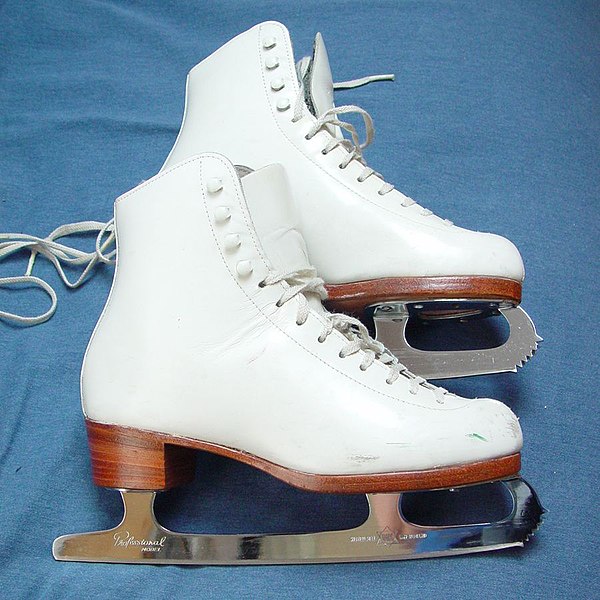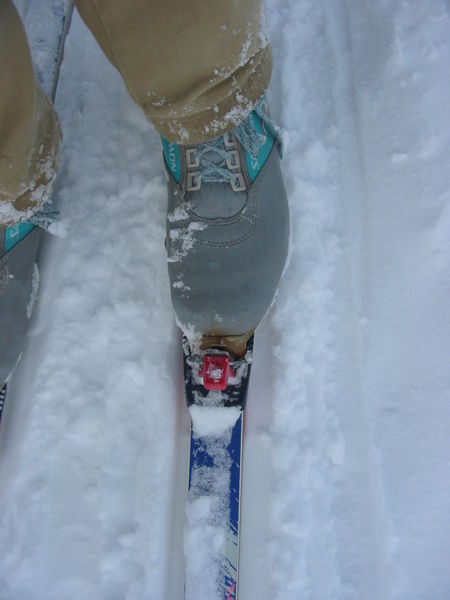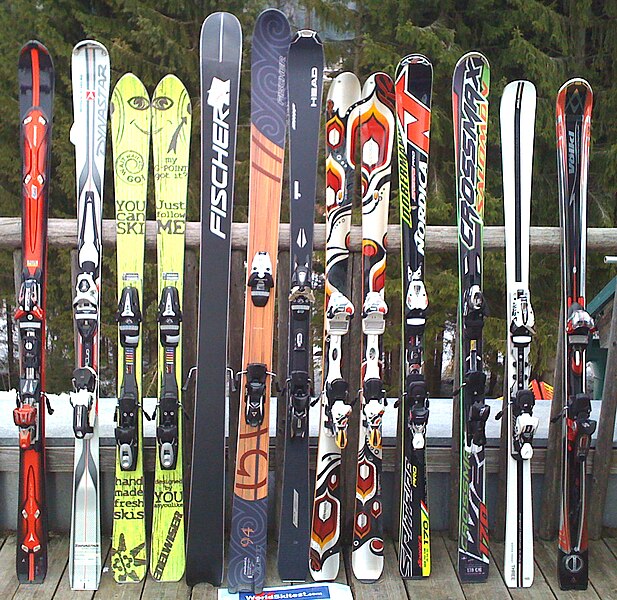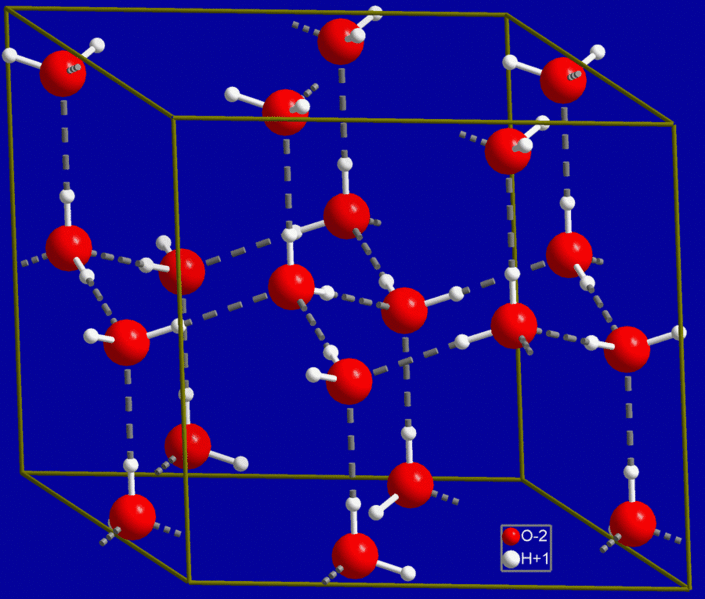Let's face it: the Winter Olympics require a lot more specialized gear than the Summer Olympics. The athletes in the Winter Olympics are doing what they do on top of ice and snow, sometimes with the help of skates or skis, and other times with the help of man-powered
vehicles.
Before we take a look at how some of this gear actually works, I'm going to introduce the topic of
Work to help make all this make way more sense for everyone.
Work, in science, is applying a force over a distance. The more force used, the more work gets done. The more distance the force is applied over, the more work gets done. It's a straightforward concept and will help to explain a lot of what Olympians use to accomplish their sports.
Now, onwards! To the gear!
The Science of Ice Skates
Ice skates allow for controlled movements over slick surfaces...at least, as long as the wearer knows how to balance properly.
But as far as balancing goes, skaters don't actually move around on the edge of a true knife-like blade. Ice skates have two parallel edges to their blade, rather than one central sharp edge. This distributes weight over a slightly wider surface area under the blade, which helps to stop the ice from melting too quickly under a skater's weight. (The force a skater exerts on the ice through their blade forces ice to melt from compression, which allows them to glide.)
In the Olympics, several sporting events rely on ice skates, such as hockey, figure skating, and speed skating. Let's focus in on the difference of the blades that you would see between each of these types of skates.
In hockey, the blade is simple and short, to allow for fast turns and ease of braking (and, I'd like to think, to avoid violence-prone hockey players from having daggers sticking out of the fronts of their boots). The blade typically runs only the length of the boot itself. Any longer, and it would require more force to change direction when skating. The longer the blade, the more friction it has when moved sideways, so turning quickly on a long blade takes a lot more effort than turning on a short one.

Because of this, hockey players do give up a certain amount of speed they could gain from having longer blades. Figure skaters actually have a bit longer of blades than hockey players, which they need to help accelerate them into jumps. The longer blade allows for the skater to use their force over a bigger distance. Remember
Work? Great. More distance means more work! A longer skate allows for greater amounts of work to be done, without having to apply greater amounts of force. In the case of skating, this work is often related to speed and acceleration.
In speed skating, this concept is taken to an extreme. A speed skate's blade is typically 50% longer than a figure skate's. Some even detach at the back to lengthen the stride of the skater by giving them
a long lever arm to continue to apply force over after their foot has already moved on to the next step. This is used in long track speed skating.
 |
| A detachable style speed skate. |
In speed skating, the blade is also thinner, since the wearer is traveling much faster and has little need to stop or twirl about. This compresses ice in a thinner band, with a higher concentration of force, thereby melting ice even more and making gliding even faster. Of course, all this compromises the ability to maneuver, so short track speed skaters make up for this by having their blades slightly bent to help them round corners.
It's all a tradeoff between speed and maneuverability. Figure skaters attempt to find the sweet spot between the two, while hockey players favor quick turns and speed skaters favor straight-on speed.
 The Science of Skis and Snowboards
The Science of Skis and Snowboards
The idea of
Work and using force over long distances also applies to skiing and snowboarding, as you might have already deduced. However, the way in which is applies might be more surprising.
Skis and snowboards are designed to "float" a person on top of snow. Just like being in a boat, a person needs a certain amount of surface area on their floating device so that they don't sink. Skis and snowboards have enough surface area to keep their riders upright, but not much more than that, so as to reduce excess weight or bulkiness in the equipment.
Cross country skis divide up this surface area differently than downhill (or "alpine") skis. Cross country skis are much more narrow throughout their length, to reduce drag as the skier moves through the snow. This require them to have a longer length than alpine skis, just by the nature of needing to keep up the right amount of surface area.

Alpine skis, in contrast, tend to be shorter and to have a waisted shape (where they narrow only towards the middle section). Much like with skates, the shorter length of an alpine ski allows skiers to turn more quickly. Additionally, the specialized shape creates differences in weight along the length of the ski--which allows for the ski to bend and be more flexible during a turn.
To increase the
Work in skiing, the extra distance is achieved not by the length of the ski alone, but also by the pole. The pole acts as a lever to extend the arm, and give an extra set of limbs to push a skier along the ground.
But in snowboarding, there is no pole. As far as getting help from gear goes, snowboarders must solely rely on the length and shape of their board to change their speeds.
Lengthier boards are favored for events that need intense speed, such as races. A longer snowboard will be more stable at higher speeds, and snowboarders can increase that
speed by shifting their body weight, as discussed in the last
Science of the Olympics post. But, as seems to be the theme today, longer boards mean less maneuverability, so for events that need more tricks and jumps, different boards are needed. For these types of events, shorter snowboards that are waisted towards the middle (like alphine skis) are used instead.
Now that we've covered all the things athletes stand on, let's take a look the things they
don't stand on. Let's look at the sleds!
The Science of Bobsled, Luge, and Skeleton
When athletes go hurdling down ice slides at over eighty miles per hour, they need
something to help them out. That something might take the form of a bobsled (the biggest of the sled-types, and the one that offers the most protection) or the luge or skeleton style sled (both essentially a smaller bobsled stripped of its protective siding).
 |
| Luge-style sled. |
All three types are derived from toboggans, which rely on runners under the sled to guide the vehicle, much like a bigger version of an ice skate. The intense speeds reached by these sleds is a result of
the icy trackway and the narrow runners, which combined create an incredibly low amount
of friction. In addition, the sloping angle of the course helps build
acceleration.
All three sled types are designed to be as aerodynamic and lightweight as possible. Extra weight actually helps speed things along when a sled is hurdling down a slide, but it's important to be able to control where that weight is. Having that weight with the athletes is better than having it with the sled, since the athletes can shift themselves accordingly to center their masses, and thereby steer.
 |
| Old-style bobsled, complete with steering rings! |
However, unlike in skeleton and luge, in bobsled it isn't just shifting an athlete's mass around that allows for steering control. In bobsled, the "pilot" (front seat) can actually move the front runners by tugging
on metal rings attached to pulleys at the head of the sled. The pulleys inside of bobsleds once again demonstrate our favorite topic today:
Work.
Rather than tugging on strings just directly attached to the front runners, athletes double their work by doubling their distance--using strings that are looped around a pulley system. Using a pulley takes less muscle force by the athlete, so they can be more precise and less strained during steering. Which, when you're going close to 90 mph, can only be a good thing!
~~~~~~~~~~~~~~~~~~~~~~~~~~~~~~~~~~~~~~~~~~~~~~~~~~~~~
Alas, with the Olympics coming to a close in a few short days, this post concludes my
2014 Science of the Olympics blog series. Perhaps we shall meet again in 2016, when we're back to the Summer Games! Until then...!











.png/434px-Photographs_of_Area_A_at_Happisburgh_(2).png)


.jpg/389px-LG_Snowboard_FIS_World_Cup_(5435935832).jpg)




_-_Mauricio_Ant%C3%B3n.jpg/800px-Woolly_mammoth_(Mammuthus_primigenius)_-_Mauricio_Ant%C3%B3n.jpg)




